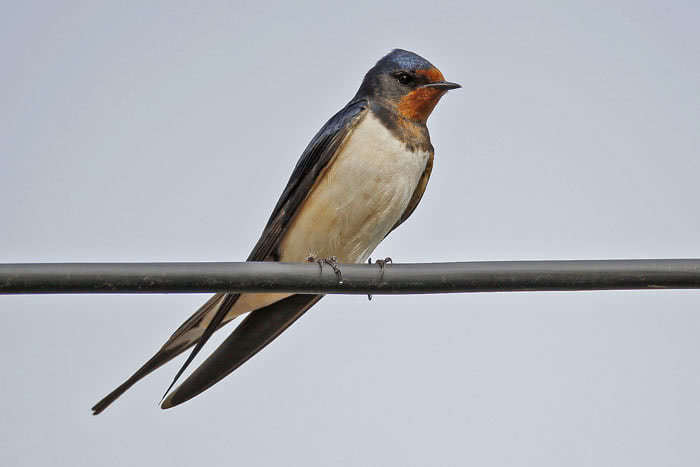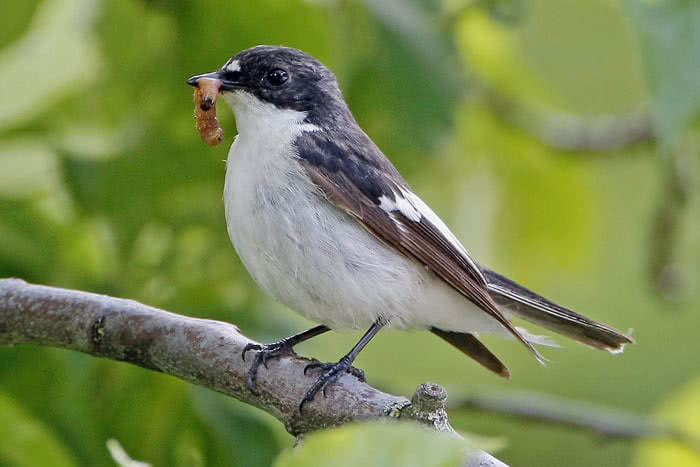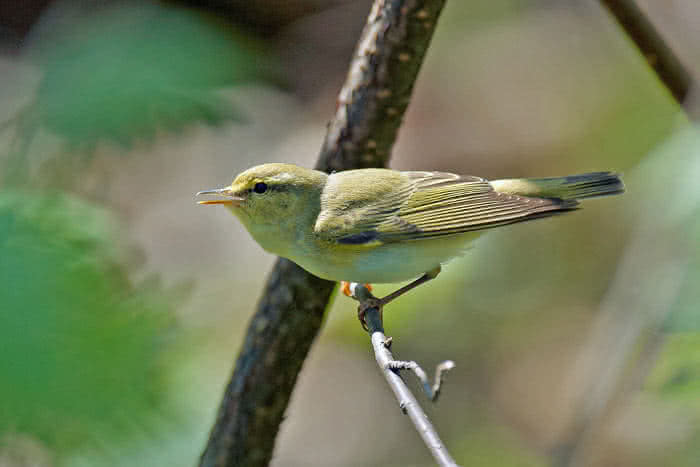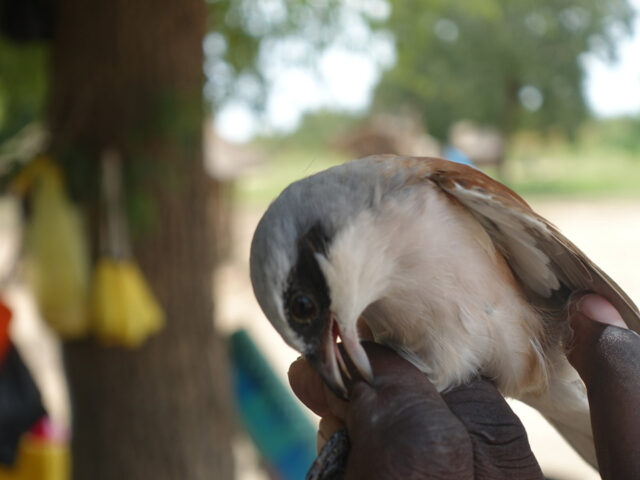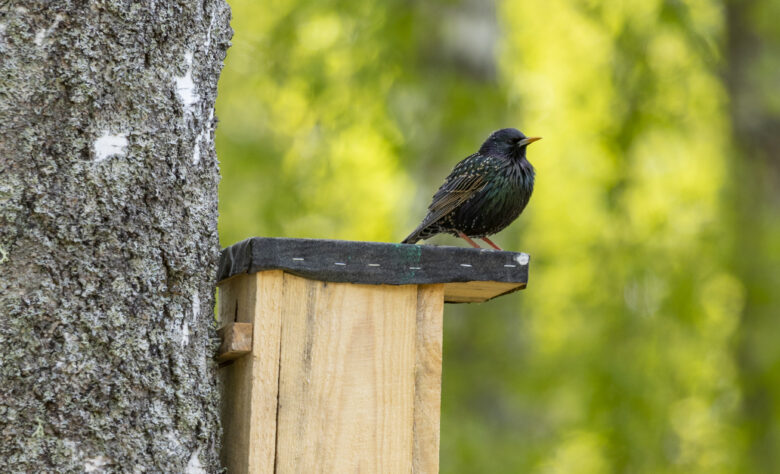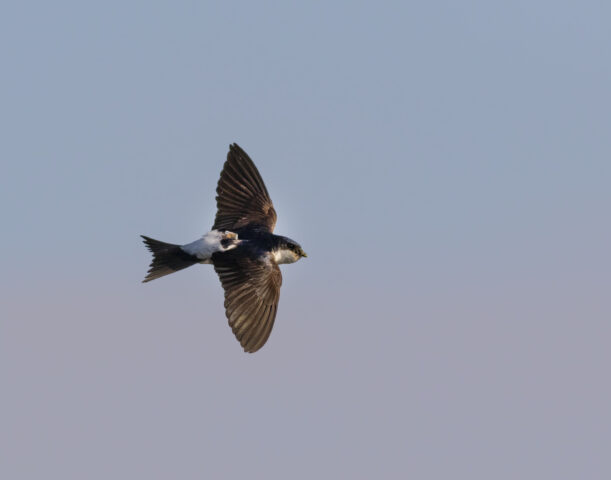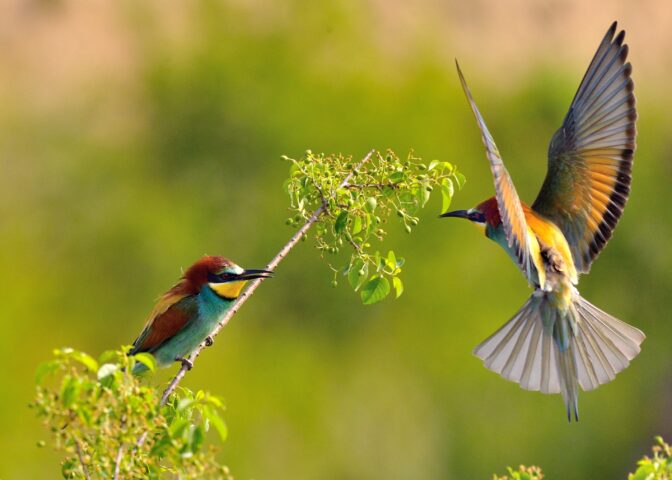This project aims to support migratory bird conservation and promote sustainable cocoa agriculture that benefits birds and people. Cocoa agriculture is expanding rapidly in Africa, with countries such as Côte d’Ivoire having lost up to 80% of their forests. Areas that originally were forested are now covered by cocoa farms; yet these areas continue to be the wintering destination of many migratory birds. With this project, we will investigate which measures can be taken to make cocoa plantations better for birds, and implement them in Ivorian farms, making cocoa consumption more eco-friendly.

Wood warbler (Phylloscopus sibilatrix) caught in an African cocoa farm.

Cocoa pods in West African farm.

Brown-throated Wattle-eye (Platysteira cyanea), an insectivorous species encountered in African cocoa farms.

Cooperative representative and local farm workers in Cote d’Ivoire

Wood warbler (Phylloscopus sibilatrix) in African cocoa farm

Bird ringing activities in cocoa agroforestry.

Cooperative representative examining cocoa beans fermenting in village in Côte d’Ivoire.

Tiny sunbird (Cinnyris minullus), one of the smallest birds encountered in African agroforestry systems.

Shady cocoa farm in West Africa.









Wood warbler (Phylloscopus sibilatrix) caught in an African cocoa farm.
Cocoa pods in West African farm.
Brown-throated Wattle-eye (Platysteira cyanea), an insectivorous species encountered in African cocoa farms.
Cooperative representative and local farm workers in Cote d’Ivoire
Wood warbler (Phylloscopus sibilatrix) in African cocoa farm
Bird ringing activities in cocoa agroforestry.
Cooperative representative examining cocoa beans fermenting in village in Côte d’Ivoire.
Tiny sunbird (Cinnyris minullus), one of the smallest birds encountered in African agroforestry systems.
Shady cocoa farm in West Africa.









Towards cocoa farming that benefits birds and communities
Details
Project objectives
We aim to make cocoa agriculture more bird-friendly by pursuing three objectives: first, alongside Ivorian researchers, we will investigate which specific actions can be taken in cocoa farms to promote bird populations, such as inter-cropping cocoa with species of shade trees that support high bird diversity. Then, we will implement these actions in a selection of farms in Côte d’Ivoire. Third, through strong collaboration with local partners we will strengthen capacity of farmers and cooperative workers in order to ensure that bird-friendly production is sustainable and locally-driven.
Methodology
Through collaboration with Ivorian ornithologists, we will survey birds in a range of cocoa plantations over 2 years, covering 2 winter seasons when migrants are present. Surveys will include visual sightings and acoustic detections of bird species, and scientists will record which shade trees are being used by birds for foraging. These data will be combined with data acquired from local cooperatives on farm productivity and management. Data analyses will allow us to identify optimal management actions, which we will then implement in a range of farms with the help of cooperative networks.

Farmer in Côte d’Ivoire standing next to a shade tree planted in his farm in the past 5 years.

Large shade tree, remnant of the forest, providing shade to cocoa trees.
Significance
Cocoa is the fastest expanding export-oriented crop in Africa; with increased consumption, especially from northern countries such as Switzerland, more and more land in West Africa is being converted to agriculture. However, cocoa plantations can be maintained in a way that benefits both biodiversity and human populations: wild animals such as birds, bats and insects provide important services in cocoa plantations such as controlling pest populations and pollination. Thus, farms managed for biodiversity can also result in higher and more sustainable yields for local farmers.
Results
Initial field work in Côte d’Ivoire involved the selection of 28 study cocoa farms, in which all shade trees were identified and counted, and birds were surveyed. Researchers identified more than 34 species of shade trees planted within the cocoa farms, and bird surveys detected 109 different bird species utilising cocoa habitats, 13 of which are migratory.
Further information
Previous studies have shown that African cocoa farms serve as non-breeding habitat for migratory birds such as the Wood warbler. Additionally, scientists have quantified the effect of insectivorous wild animals in African cocoa farms, finding that under low-intensity management these animals save farmers up to 440 CHF per hectare per year, by controlling pest populations. These services can outweigh short-term benefits of agricultural intensification. Therefore, there is potential for win-win scenarios where birds are conserved in plantations thus promoting natural processes that boost yields.
Project partner(s)
- Prof. Hilaire Yaokokoré-Béïbro, and his research group, at Université Félix Houphouët-Boigny
- Group Anouanzè cocoa cooperative, lead by Mr Daouda Kouakou
- Groupe National de Travail pour la gestion durable des forêts et la certification forestière de Côte d’Ivoire (GNT-CI)
Financial support
- Anonymous Foundation
Publications
https://doi.org/10.1016/j.biocon.2023.110191
https://doi.org/10.1111/1365-2664.14563
Project team members






Trade publications
2022
Europe and the West African savannas Bruderer, B. & D. Peter, 2022
Contact: info@vogelwarte.ch
License: zenodo-freetoread-1.0
doi-Link: doi.org
Contact: bruno.bruderer@vogelwarte.ch
2021
Contact: info@vogelwarte.ch
License: zenodo-freetoread-1.0
doi-Link: doi.org
Contact: bruno.bruderer@vogelwarte.ch
Betroffene Vogelarten
Bird Migration
We research migratory birds from their breeding grounds to Africa and lay the foundations for their protection beyond national borders.
Additional projects
We handle the donations entrusted to us very carefully. For many years, the Swiss Ornithological Institute has carried the ZEWO seal of approval for non-profit institutions.












